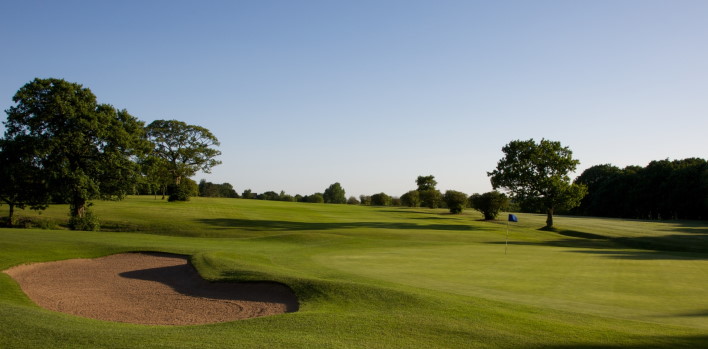Pleasington

I was already a huge fan of the course after I previously visited back in 2017 but the transformation since then has elevated the course to the next level and I'm sure once the various ranking publicatioins catch up we will be seeing Pleasington in the Top 100 of England lists. Watch this space.
A former Regional Open Qualifying venue, Pleasington boasts a very fine inland golf course - irrefutably one of the best tracks in the county away from the sea.
It is set in almost 150 acres of beautiful rolling East Lancashire countryside with easy access from all points of the compass. Originally designed by George Lowe and later extended by Open Champion Sandy Herd this rural layout offers the golfer an engaging challenge with a wonderful variety of holes, including one highly unique one!
Unusually the course has a par of 38 on the front nine (3 par-fives against 1 par-three) and a par of just 33 on the inward half. I believe this imbalance may be due to the switching of a couple of holes holes when a new bridge was built to cross a railway line running through the heart of the course. The total yardage of the par 71 layout is 6,473 off the back tees and this is where I played the course from in the 2017 Pleasington Antlers 36 hole scratch tournament. However, for my most recent visit in August 2025 we pegged it up from the "64" tees - a yardage of 6,350. The challenge was no less taxing and it was presented superbly with excellent mowing lines, particularly around the greens.
As mentioned earlier, a train track splits the course into two distinct parts. The 12 holes on one side of the railway (1-5 & 12-18) are played through established parkland where stunning and spaciuous mature trees are present. Meanwhile, the remainder of the course on the other side (6-11) offers a stark contrast with a more open moorland and heathland terrain; these holes contain swathes of heather, patches of gorse and the turf is firmer and tighter.
However, it all comes together nicely to create a very pleasing round of golf.
Of the opening and closing holes I enjoyed all of them - there is some good variety and accurate iron play is especially required to find the well-guarded greens. In my original review I was critical of trees encroaching on far too many of them but the recent renovation, overseen by respected architect Ken Moodie, has opened these holes up beautifully and has now created some wonderfully framed holes. None more so than the short 16th which has gone from being an almost blind and claustrophobic par-three to a picture perfect one-shotter.
Moodie's work has also helped restore the course to a more heathland feel which will no doubt continue to develop over the coming years. Members and visitors alike are already seeing improved playing surfaces with greater playability across the entire property.
Renovation of the bunkers has also brought a new lease of life to Pleasington and helps create a memorable playing experience.
The drive at the fifth is quite a scary one with the railway running all the way down the right-hand-side and the lay of the land falling that way too. The approach shot into 18 is also one fraught with danger; the clubhouse is just behind the green and the car-park is very much in play! Finding yourself above the hole on most of the greens can also be quite terrifying as there are some significant slopes. Course management and plotting your way round Pleasington is vital.
In my personal opinion the most interesting golf can be found on the true heath and moorland side of the course where there is a real vibrancy to the holes. The driveable sixth and par-five ninth are two wonderful holes but it is the seventh which will grab all of the headlines.
Named "The Mill" it is a par five of just over 500 yards and has a rapid downhill elevation change of 100 feet at around 250 yards from the tee. On paper it sounds like an easy hole but it’s one of the most testing, unusual and thought provoking holes I’ve played. It’s possible with a good drive to find a narrow funnel of fairway that will feed your ball from the top plateau down to the offset lower section and leave not much more than a mid-iron into the green. However, in the most likely scenario that you should stay on the top level you then have a decision to make as to what angle you play down to the bottom fairway. It’s not infeasible to simply putt it down the chute at right angles nor is it impossible to have a crack at the green… or anything in between. Recent tree removal now means that you can see most of the lower fairway and also the green so you no longer have to guess the line and distance. It's a much better hole now the trees have been removed but isn't quite as nerve-jangling as before. How you play the hole is up to you but there are several options.
Pleasington is superb course and one I would strongly recommend a visit to. The Club host a number of good value open competitions throughout the year when you know if competeing in one these the course will be presented in tip-top condition to boot.



